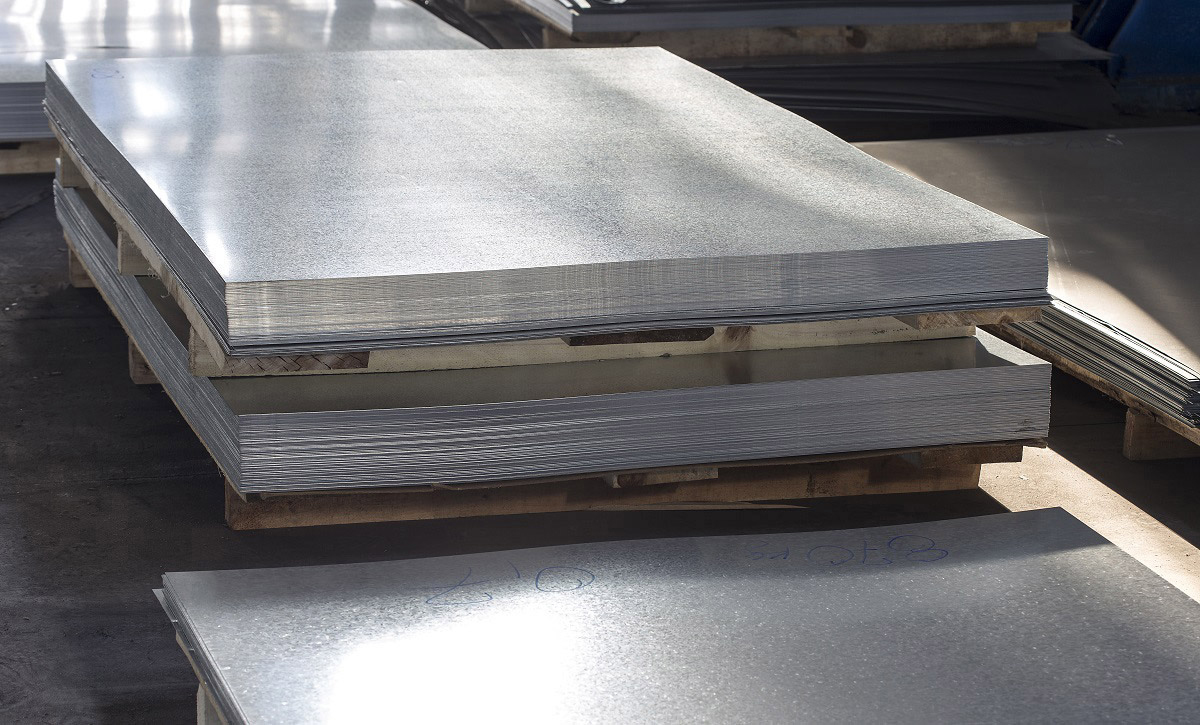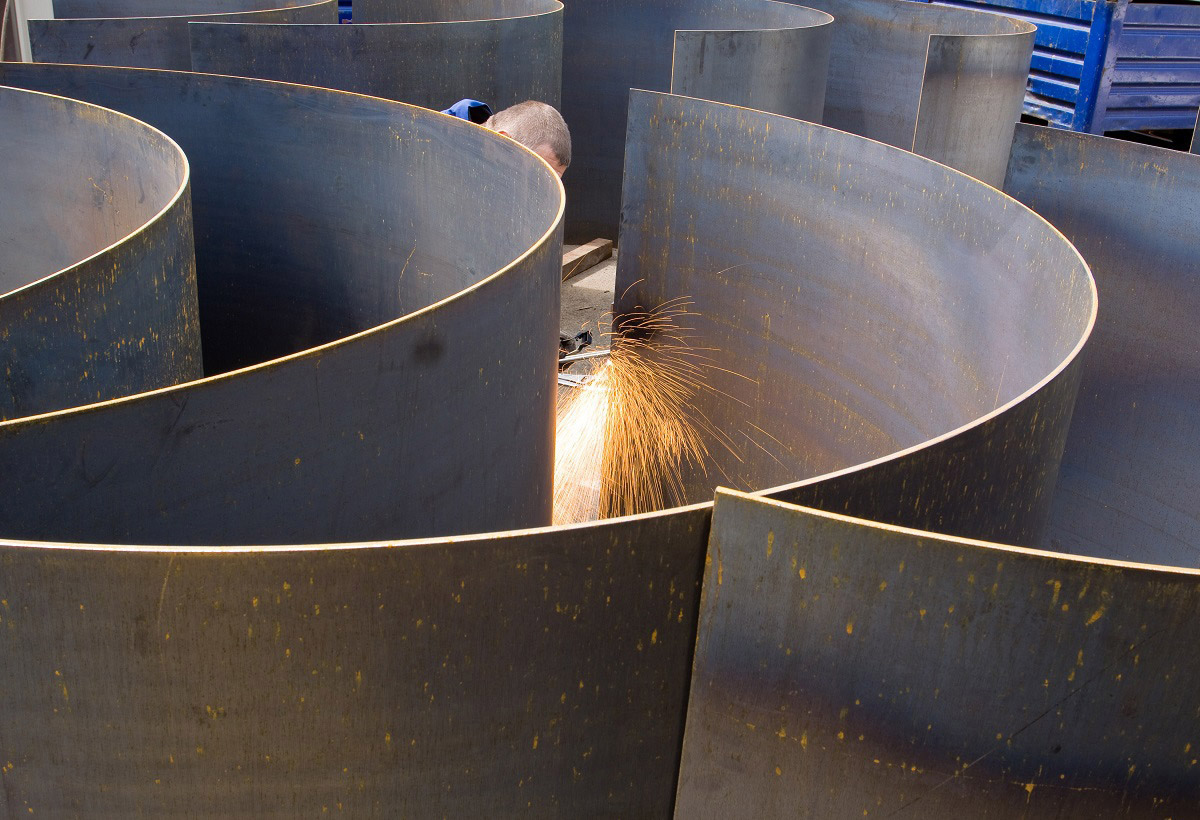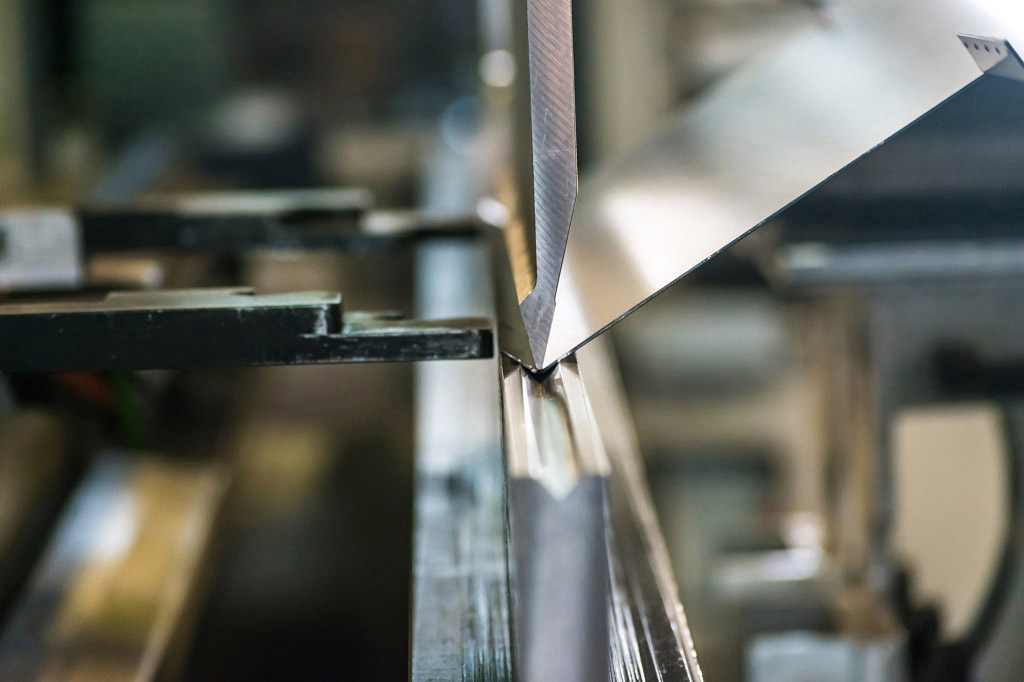
Sheet metal can be used in a variety of processes to build machinery and structures for different industries. Although the process of fabricating sheet metal can be complicated, skilled engineers can use techniques such as bending, notching, shearing, shrinking, or beading to form components and parts made from sheet metal.
Whether you have a decade of sheet metal fabrication under your belt or you’re just beginning to learn the basics, it’s always beneficial to brush up on such a complex subject matter. We’ve outlined additional information to help you understand this process.
Types of Sheet Metal Fabrication Metals
Many different types of sheet metals should be considered depending on the function of the product being constructed. Some examples of metals commonly used in the sheet metal fabrication process include:
- Aluminum: Aluminum is known to be incredibly lightweight while still offering some of the strength that steel does. It can be fabricated using lower temperatures, making it ideal to use in applications such as refrigeration or aerospace.
- Steel: This metal is particularly known for its durability and strength. Many different types of steel can be fabricated and used in a range of industries and applications.
- Magnesium: This metal is known for its low density, and it can provide stiffness when needed.
- Copper: Not only is copper corrosion-resistant, but it is also malleable, ductile, and can conduct electrical energy.
- Bronze: Stronger than copper, bronze has a low melting point and is commonly used to make cookware, turbines, and coins.
- Brass: Brass is a metal commonly used in structural fittings and other components. Not only is it corrosion-resistant and lightweight, but it is also known for its acoustic properties.
Sheet Metal Fabrication Process Steps

The sheet metal fabrication process consists of multiple steps to safely produce reliable products. Although specific steps may vary slightly, the overall process is the same.
Step #1: Generate Blueprints
Products or pieces of equipment made from sheet metal first begin as a blueprint or plan. The engineer working on the project is responsible for creating a blueprint to map out the item’s specifications. The original drawings may be rough to map out how much material is required and what the project as a whole will look like.
Step #2: Finalize Drawings
As soon as the blueprint is accurate and represents the product or products being constructed with sheet metal, a final shop drawing will be produced. This drawing will feature all of the details and specifications necessary to produce the end product.
This is the point of the sheet metal fabrication process where in-depth and accurate calculations need to be made to determine how much stress will be put on different areas of the sheet metal. As soon as the calculation is finished, it will help determine the fabrication steps that need to be involved.
Step #3: Fabricating the Metal
The next step in the sheet metal fabrication process is to transform the metal from sheets into the necessary shapes and dimensions. This third step is where the raw materials for the project go through specified processes to produce the final product.
Not only does the blueprint determine how the product is fabricated, but the material being fabricated and the budget of the project also factor in.
Step #4: Finishing the Product
To finish the sheet metal fabrication process, the product needs to undergo specific processes to make it ready for commercial use.
Each step in this process plays an important role and helps result in a durable, aesthetically pleasing end product. Design specifications must be met, and no steps should be rushed; doing so will also create a better relationship between the metal fabricators and the client.
Sheet Metal Fabrication Processes

Transforming pieces of sheet metal into different products consists of three different metal fabrication techniques. We’ll explore forming, cutting, and joining below.
Forming
The term “forming” encompasses different sheet metal fabrication techniques such as bending, stamping, and roll-forming. As the name suggests, forming consists of bending flat pieces of sheet metal into the desired shape.
Here are some ways to form a piece of sheet metal into the desired contours:
- Stamping: Metal stamping uses either single or progressive dies on flat metal sheets to configure the metal into the desired form. It uses intense force and speed provided by a powerful motor.
- Bending: Bending sheet metal is achieved through a punch and die process. Punch and dies come in a variety of forms to achieve a multitude of shapes. Whether the sheet metal needs to form a 90-degree angle or subtle curves can easily be achieved through bending.
- Stretching: This metal fabrication process uses a stretcher, a hammer, and dolly, or an English wheel to pull apart the metal. Stretch presses place gripping jaws on either side of the sheet metal to successfully separate the metal and pull it apart.
- Roll forming: This process is similar to bending, however, the entire sheet of flat metal travels through a pair of rolls to configure the metal into the right shape. This process is completed on a roll-forming line to produce the desired results.
Cutting
Another sheet metal fabrication process is cutting. This can be achieved both with and without shear. If shear cutting is used, it will involve processes such as shearing, blanking, or cutting. Although shear cutting is not as precise as machining, in many applications the desired results can be achieved through a shear process.
Here are some examples of sheet metal cutting techniques:
- Cutting: The basic cutting process uses a single blade to cut through the metal sheet.
- Blanking: In the blanking manufacturing process, a flat geometric shape commonly referred to as a “blank” is used to create a punch-out in the metal sheet. The coil of sheet metal is fed through a press and die system to create shapes. The remaining punched-out material is then discarded.
- Shearing: As you may assume, shearing uses a similar process as cutting with scissors. A combination of upper and lower blades make cuts into the metal sheets in straight lines. In the shearing metal forming process, one blade remains stationary while the other lowers to create the cut.
Non-shear cutting is another possible metal-cutting technique. These processes produce more accurate cuts, making them ideal for industrial products such as airplane wing fabrication or other items with highly specific measurements.
Examples of non-shear cutting techniques include:
- Laser cutting: This process uses a beam of light to act as the cutting agent. The laser can either cut through the metal or engrave it depending on the desired result.
- Plasma: Compressed gases such as hydrogen and nitrogen make this metal fabrication process possible. As these gases come out of the nozzle at high speeds, they become ionized and result in electricity.
- Machining: This refers to processes such as spinning or milling. It is achieved by taking a lathe blade or a drill bit to cut off metal material pieces.
- Waterjet cutting: Through concentrated and high-speed streams of water, waterjet cutting relies on erosion to make cuts into the metal material.
Joining
The process of joining assembles multiple metal components to create the specified product. Joining may include welding techniques such as MIG, TIG, or laser welding in addition to the use of hardware fasteners.
Here are some metal joining techniques:
- Welding: Welding techniques include gas metal arc welding (MIG welding), gas tungsten arc welding (TIG welding), and stick welding. Extreme heat warms up the metal pieces so they can fuse together. A filler is added to strengthen the bond.
- Brazing: Brazing is similar to welding, however, it melts the filler instead of melting the metal sheets.
- Adhesives: Structural adhesives are designed to hold metal pieces together either on their own or in combination with another joining method.
- Riveting: Small metal parts are directly embedded into both of the metal sheets to join them together.
Finishing processes typically follow the sheet metal fabrication process. This can help elevate the properties of the finished product. Examples of finishing processes include coating, sandblasting, annealing, or deburring.
Industries That Use Sheet Metal Fabrication
Because there is so much variety in the sheet metal fabrication process, it can be used in many industries. From building houses to automotive parts, the need for metal fabrication is nearly endless.
Common industries that heavily rely on sheet metal fabrication include HVAC, consumer goods, electronics, robotics, aerospace, and construction. Please note that this list of industries is not exhaustive. Sheet metal is an inexpensive material that is easy to work with and offers strength that other manufacturing techniques do not.
Conclusion
Sheet metal processing and fabrication is an integral part of many industries. As Chicago’s go-to metal fabricator, we pride ourselves on quality craftsmanship and a commitment to excellence.
Get in touch with our professional team at Schaumburg Specialties if you want to learn more about our metal forming and our fabrication capabilities.